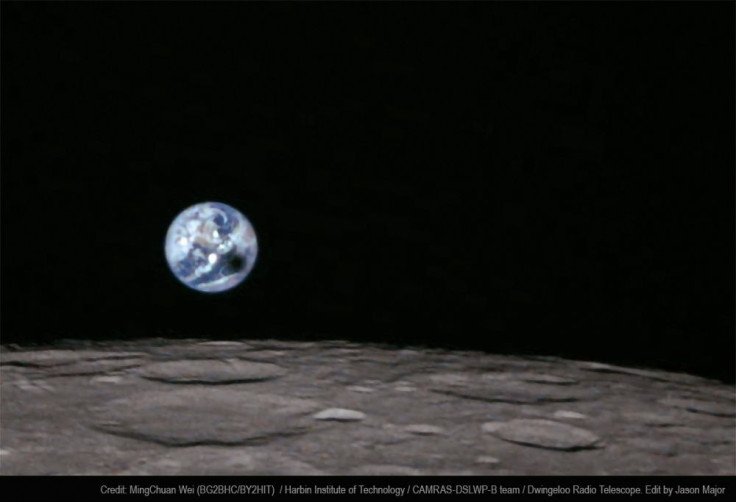Photos Show How Total Solar Eclipse Looked From The Moon
KEY POINTS
- A satellite captured last year's solar eclipse from the Moon's perspective
- The photos were captured by a satellite launched by China
- The photos show the Moon's shadow on Earth
A satellite orbiting the Moon captured the amazing moment when a solar eclipse occurred. The photos taken by the satellite show the cosmic phenomenon from the Moon’s perspective.
On July 2 last year, a solar eclipse occurred. This natural phenomenon happens when the Moon moves directly between the Sun and the Earth. This causes the Moon to cast its shadow on Earth, resulting in partial or total darkness for a brief period of time in areas affected by the eclipse.
From Earth’s perspective, a total solar eclipse makes the Sun look like a giant ring of fire as the Moon covers its center.
During the solar eclipse last year, the Moon’s shadow on Earth traveled across the south Pacific Ocean. On land, the shadow covered parts of Argentina and Chile. Those living within these regions saw how day turned into night for a short period of time.
As the Moon created a shadow on Earth last year, the natural satellite was orbited by a robotic spacecraft launched by China, known as the Longjiang-2. Launched in 2018, the Longjiang-2 is a microsatellite that was equipped with a device known as the Inory Eye Camera, which was built by students from China’s Harbin Institute of Technology, Universe Today reported.
Through this device, the microsatellite was able to capture amazing photos of Earth from the Moon’s orbit during the solar eclipse.
In the photos, the shadow of the Moon appears as a large dark spot on the surface of Earth. The dark spot moved across Earth throughout the duration of the eclipse and as the microsatellite changed its position in the Moon’s orbit.
When the images were first taken, they had a purple hue due to the process involved in capturing the photos and sending them to Earth. Jason Major, a graphic designer for Lights in the Dark, edited the photos to give Earth and the Moon their natural colors.
Unfortunately, the solar eclipse on Earth was one of the last photos taken by Longjian-2. On July 31 last year, the microsatellite crashed into a crater on the Moon following the end of its mission.

© Copyright IBTimes 2024. All rights reserved.





















